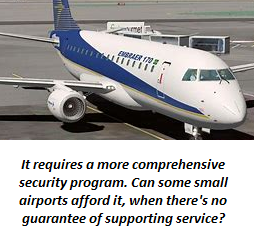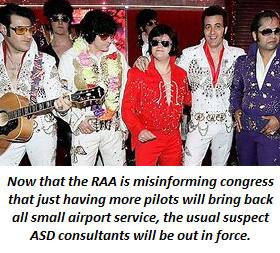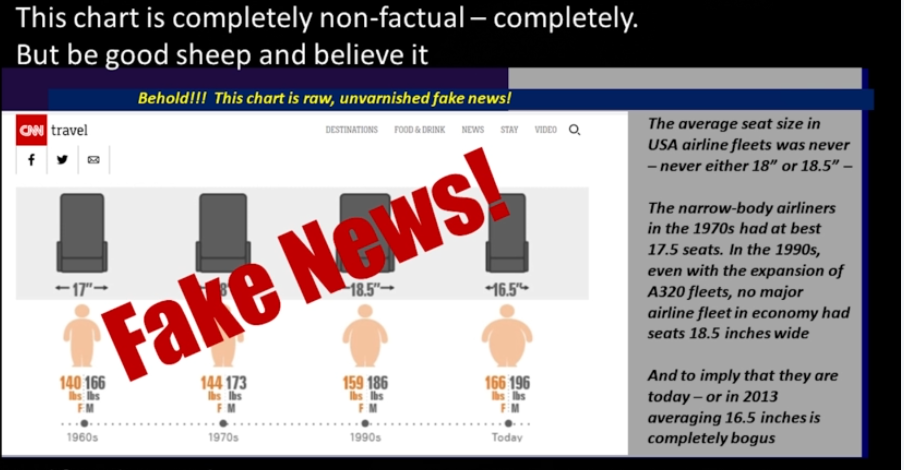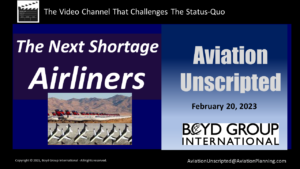Airport Air Service Management:
Too Bad Houdini’s No Longer Available
Just came across an article regarding a small airport on the East Coast.
Seems the airport board is fixin’ to zap the airport director.
For cryin’ out loud, he’s been on the job for over five years and has failed to bring more airlines into town. ‘Course, the story was 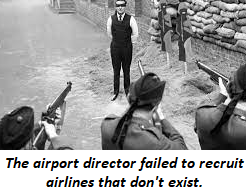 accessorized by the sad tale of all the wonderous service the airport had ten years ago, and how today it’s down to just one network carrier. That’s not acceptable. “We need to recruit more airlines, now!”
accessorized by the sad tale of all the wonderous service the airport had ten years ago, and how today it’s down to just one network carrier. That’s not acceptable. “We need to recruit more airlines, now!”
So, the fine folks on the board appear to be ready to toss out the incumbent director, for dereliction of duty. They probably want a person who can dive into the giant vat of available airlines and bring a couple home, regardless.
Now that’s real community spirit! An air service pep rally or two at the local high school stadium is in order. And they may want to conduct a goat sacrifice to the airline gods out on the runway while they’re at it.
Signs of A Weak Airport Board. The people who are on airport boards have the responsibility to understand the realities of air service and of airline economics. To be otherwise is unprofessional.
So, tossing the director under the bus just for non-recruitment of airlines is the leper’s bell of governance that is somewhere out in la-la land.
Unfortunately, this is more common than one might think. That’s because a lot of communities are not fully informed regarding air service realities, and some are kept mis-informed by ethically challenged ASD consultants.
Damn The Reality Torpedoes! Full Speed Fantasy Ahead! This dovetails with a call we received a while back from the director of a small airport in the central USA, wondering if BGI would be interested in air service consulting.
The story is that the airport is down to one network carrier system, and the board of directors is taking action.
The first step was positive – delivering a pink-slip to the current air service consultant, which has been hosing the airport for years with jive studies, speed-date meetings, and lavish promises probably based on a list of air service recruitment “successes” longer than Interstate-35. Needless to say, a lot of those airlines involved might not recall their fine work.
So, the head of the board decided it was time for a new consultant. But after that, it’s pretty obvious that at this airport, it’s more correctly the time for an informed board, not another consultant.
Yikes. Here are the results they are demanding from a new consultant.
First, the consultant must recruit another airline. Any airline. Or else.
Second, the new consultant must convince the remaining network system incumbent to add more destinations other than just to their connecting hub.
And finally, the consultant must continue to deliver the usual eye-candy, such as massive studies, going to speed-date meetings, and performing economic impact analyses, etc., all of which the last Pied-Piper consultant had probably done, and none of which will do diddly to recruit more air service within the realities of today’s airline economics.
Attention, Attention! Calling Houdini From The Great Beyond. These expectations, within the air transportation realities of 2023, are right out there with fairy dust and incense-filled soirees. None of these studies will change anything, including the dollars they’re in danger of spending on yet another consultant that’s not telling them the truth.
In point of fact, the potential target airlines for any US airport are clear from the start. There are not many left, and all have clear strategies, fleets and route plans. Any consultant who just promises to “find more airlines” without identifying the targets up front has an ethical problem.
There Are Options. But They’re Not In The Traditional Playbook. The expectations of this airport board are completely counter to air transportation realities. But rather than politely ending the call with “thanks for calling, smoke’em if you’ve got ‘em, and good luck,” we instead took the time to talk at length with the director, and follow-up with a short report, clarifying how he needed to deal with this, providing examples specific to the airport.
Our recommendation was that the first and most important project was to educate the board and the community on air service realities. Otherwise, the path was to get another charlatan consultant on contract, doing all sorts of voodoo to continue to lead the board in the wrong direction.
The realities facing this airport were outlined. We pointed out that there isn’t “another” network airline. In this case, it was illuminated that the carrier that had recently pulled out was clearly losing money. Plus, the only other potential network airline system target had already yanked service at much larger airports in the region. A couple of phone calls to both of these airlines would put these dreams to bed.
Regarding the second demand, we pointed out that the remaining incumbent simply does not operate point-to-point service from small airports. Again, a call to the carrier would 86 the dream. No studies needed.
So, both “requirements” for a new consultant were out.
The ethical path we recommended was to work to educate the board and the community about the structure and economics of air transportation. Otherwise, eventually he himself could expect a pink slip for failing to recruit airlines that don’t exist to operate flights that can’t make money.
The report outlined alternative approaches to retaining the incumbent and investigating new revenue opportunities for the airport.
This took some time to outline, but it was important to let the director know that the airport was heading in the wrong direction.
Fighting Sacred Beliefs Can Be Dangerous. Needless to say, that was the end of communications from the airport involved. Our recommendations were probably not politically correct. And in fairness, for the director it could be an instantly career-limiting event to even attempt to discuss these realities with an airport board that’s intent on bringing back the past.
This is the #1 issue in air service access development… an informed and open-thinking community. It is understandable that the average citizens will have misconceptions about local air service.
But that’s not acceptable for people entrusted with airport governance. Nor for the snake-oil peddlers hired to tell them what they want to hear.
Regardless, economic gravity will eventually prevail.
_______________
Looking For Futurist Airport/Air Service Planning?
These examples are not uncommon. There are dozens of communities that are not up to speed regarding the new future opportunities in air service and aviation.
It is important that the air transportation industry be understood in future planning.
Boyd Group International has a comprehensive program called Runway to The Future, which is designed to assist communities and airports identify future trends and plan to optimize them.
Click on the contact button, and we’ll get information to you. Hard facts, direct discussions and clear visions. We look forward to talking!
__________________
 We rely on Cirium as our source of aviation data and related information. We highly recommend them for easy and indepth access to solve analytical challenges.
We rely on Cirium as our source of aviation data and related information. We highly recommend them for easy and indepth access to solve analytical challenges.
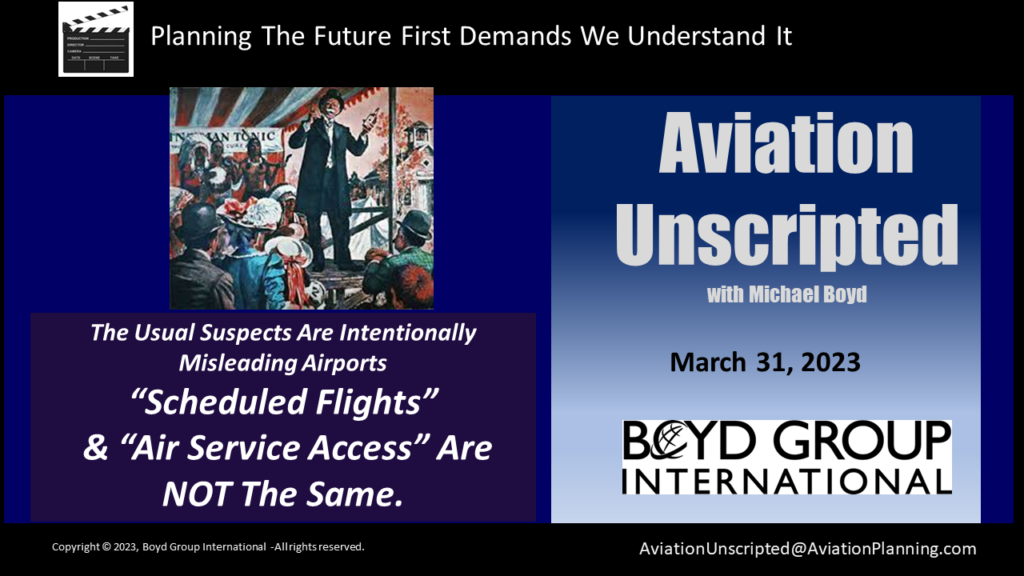 inevitable and ignore the opportunities of the future.
inevitable and ignore the opportunities of the future.




